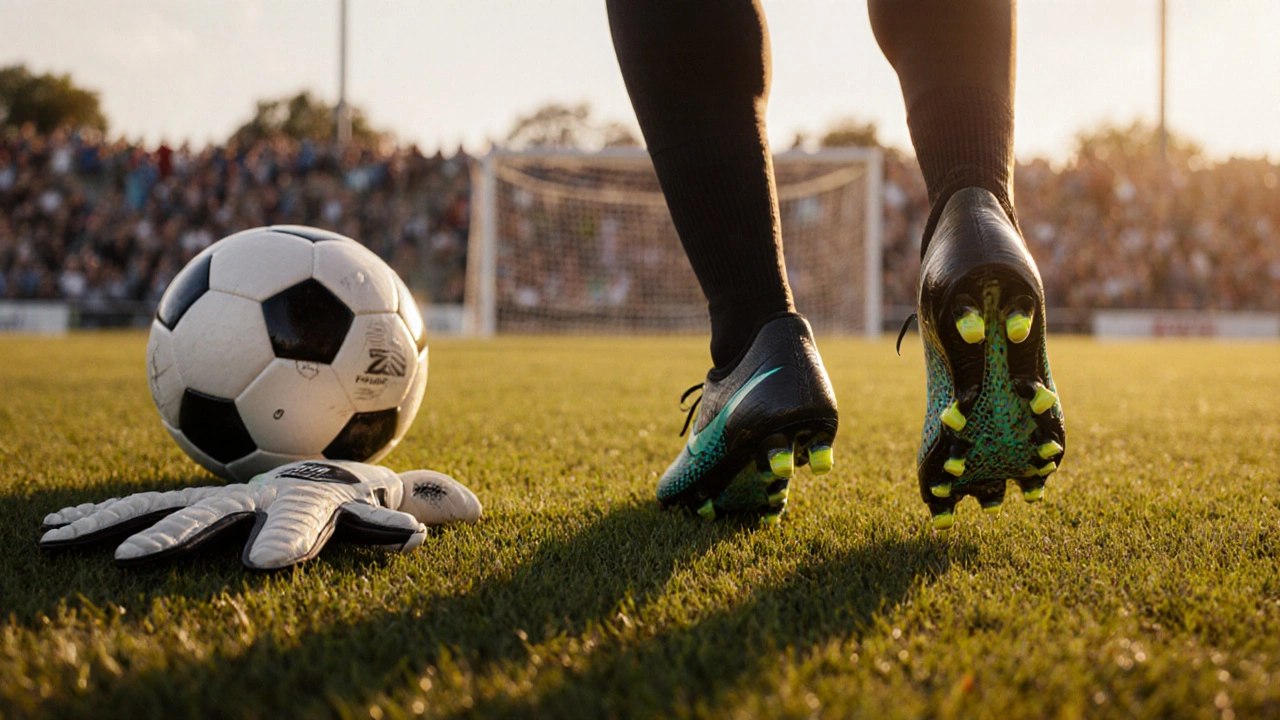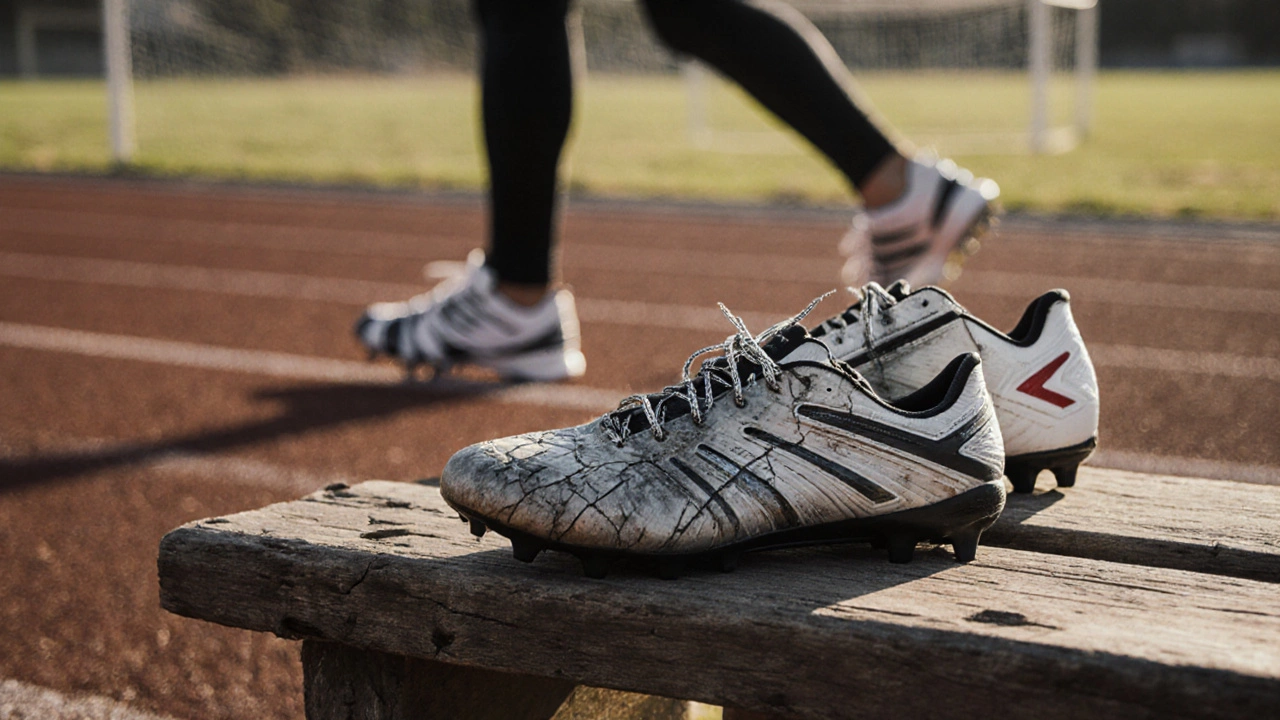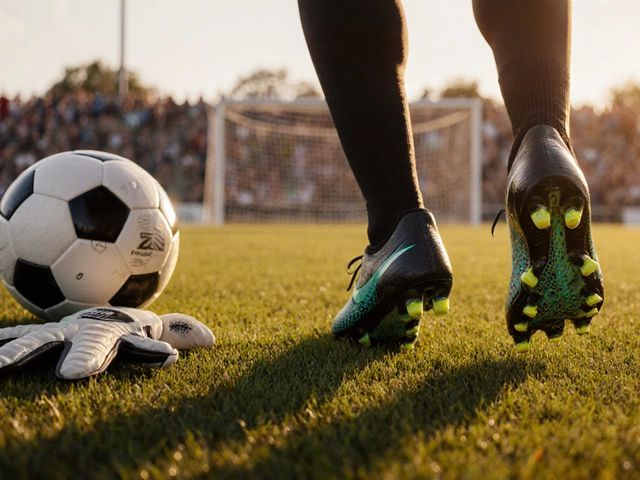What Is Sports-Specific Equipment? A Clear Guide for Athletes

Ever watched a soccer player in cleats, a cyclist in a tight suit, or a baseball player with a glove that looks like it was made for their hand-and wondered why they don’t just use the same gear for every sport? That’s sports-specific equipment. It’s not just about comfort or style. It’s about safety, performance, and function. Every sport has its own physical demands, and the gear designed for it matches those needs exactly.
Why Does Sport-Specific Equipment Exist?
Think of your body as a machine. Different machines need different tools. A hammer isn’t useful for threading a needle, and a running shoe won’t help you grip a muddy soccer field. Sports-specific equipment exists because each activity puts unique stress on the body and requires specific movements.
Take basketball. Players jump, cut, and change direction rapidly. Their shoes have high tops to support the ankle and rubber soles with deep treads for grip on hardwood. Now compare that to a pair of hiking boots. They’re built for traction on dirt and rocks, not quick lateral moves. Wear them on the court, and you’re more likely to twist an ankle than score a basket.
The same logic applies to protective gear. Hockey players wear padded shells because they’re at risk of high-speed collisions and flying pucks. Swimmers don’t need that. They need suits that reduce drag in water. Using the wrong gear doesn’t just hurt performance-it increases injury risk.
How Sports-Specific Equipment Differs by Sport
Let’s break it down by a few major sports. You’ll see how even small details make a big difference.
- Soccer: Cleats with molded or detachable studs for traction on grass or turf. The ball is size 5, round, and made of synthetic leather to handle weather and repeated kicks. Goalkeepers wear gloves with grip-enhancing palm material-something no other player needs.
- Tennis: Rackets are lightweight with tight string patterns for control. Balls are pressurized and covered in felt to slow down and bounce predictably on clay, grass, or hard courts. Players wear shoes with non-marking soles and lateral support for side-to-side movement.
- Baseball/Softball: Bats are made of wood or aluminum, sized for swing speed and power. Gloves are webbed and deep, designed to catch fast-moving balls. Catchers wear masks, chest protectors, and shin guards because they’re in the line of fire.
- Swimming: Swimsuits are engineered with compression panels and hydrophobic fabrics to reduce drag. Goggles seal tightly to prevent water entry and offer UV protection. Caps reduce resistance and keep hair out of the way.
- Running: Shoes have cushioning focused on heel-to-toe transition. They’re breathable, lightweight, and designed to flex with the foot’s natural motion. No ankle support, no tread-just enough structure to absorb impact.
Even within a sport, equipment varies. A marathon runner’s shoe is different from a sprinter’s. A youth baseball glove is smaller than an adult’s. A beginner tennis racket has a larger sweet spot than a pro’s. It’s not one-size-fits-all-it’s one-sport-fits-one-purpose.
What Happens When You Use the Wrong Gear?
Using non-specific equipment might seem harmless. Maybe you’re trying to save money, or you just don’t have the right gear handy. But the consequences add up.
Running in basketball shoes? You’ll feel heavier, your stride will feel forced, and you’ll risk shin splints or plantar fasciitis from poor cushioning. Playing volleyball in regular sneakers? You’ll slip on the court, strain your knees from lack of shock absorption, and lose quickness.
Even safety gear gets dangerous when misused. Wearing a football helmet while biking? It won’t protect your head the same way a bike helmet does. Bike helmets are designed to absorb a single high-impact crash and are tested for blunt force from above. Football helmets are built for repeated lower-impact hits and have face guards that can trap debris or cause neck strain in a fall.
A 2023 study by the American College of Sports Medicine found that athletes using non-sport-specific footwear were 47% more likely to report overuse injuries over a 6-month period than those using gear designed for their activity.

How to Choose the Right Equipment
Buying sports-specific gear doesn’t mean buying the most expensive thing on the shelf. It means matching the tool to the task.
- Know the sport’s demands. Does it involve jumping? Cutting? Throwing? Sliding? Each motion requires different support and materials.
- Check the gear’s design. Look at the sole, the fit, the padding, the weight. Is it made for your surface? For your movement pattern?
- Try it before you buy. Walk, jump, or move the way you would during the sport. Does it feel natural? Does it restrict you?
- Don’t ignore fit. A glove that’s too loose won’t catch. Shoes that are too tight cause blisters. Equipment that doesn’t fit properly defeats the purpose.
- Ask coaches or experienced players. They’ve seen what works-and what doesn’t-on the field, court, or track.
There’s no shame in renting gear before buying, especially for kids or beginners. Many sports clubs and recreation centers offer rental programs. It’s a smart way to test what fits without overspending.
Common Myths About Sports Equipment
Let’s clear up a few misconceptions.
- Myth: “A good shoe is a good shoe, no matter the sport.” Truth: Running shoes are designed to absorb impact forward. Basketball shoes are built for lateral stability. One can’t do both well.
- Myth: “More padding means better protection.” Truth: Too much padding can restrict movement, slow you down, or even cause overheating. Equipment is engineered for balance-not bulk.
- Myth: “I’ll just use my old gear.” Truth: Gear wears out. Cushioning breaks down after 300-500 miles of running. Helmets lose impact resistance over time. Worn gear is unsafe gear.

Where to Find Reliable Sports-Specific Gear
You don’t need to shop at fancy sports stores. But you do need to know what to look for.
Look for brands that specialize in the sport you play. Nike, Adidas, and Under Armour make gear for multiple sports, but their soccer cleats, basketball shoes, and swimwear are developed by different teams with different expertise. Specialty brands like Mizuno (volleyball), Wilson (tennis), or Bauer (hockey) often lead in performance innovation for their niche.
Check reviews from athletes who play the same sport as you-not just general fitness bloggers. Sites like Runner’s World, Tennis Warehouse, or USA Swimming have gear guides written by coaches and competitive athletes. Look for feedback on durability, fit, and real-world performance, not just marketing claims.
Final Thought: Gear Is Part of Your Training
Equipment isn’t an afterthought. It’s part of your preparation. Just like you train your muscles, you need to train with the right tools. The right gear lets you move better, play longer, and stay safer. It doesn’t make you a better athlete overnight-but it removes barriers so your effort can actually translate into results.
Whether you’re playing for fun, fitness, or competition, using gear made for your sport isn’t optional. It’s the foundation of smart, sustainable participation.
Is sports-specific equipment only for professional athletes?
No. Sports-specific equipment benefits everyone-from kids learning to play to weekend warriors. The difference between using the right gear and the wrong gear is most noticeable in injury prevention and comfort. A beginner runner in proper shoes will have fewer aches and enjoy the experience more than someone in old sneakers.
Can I use one piece of equipment for multiple sports?
Sometimes, but rarely well. Cross-training shoes are designed to handle light gym work, running, and court sports, but they’re a compromise. They won’t offer the same support as a dedicated running shoe or the lateral stability of a basketball shoe. For serious participation in multiple sports, having sport-specific gear is still the best choice.
How often should I replace my sports-specific gear?
It depends on use. Running shoes typically last 300-500 miles. Tennis rackets may last a few years unless the strings break often. Helmets and protective gear should be replaced after any major impact or every 3-5 years, even if they look fine. Always check manufacturer guidelines and inspect for wear-cracks, flattened cushioning, or loose straps mean it’s time to replace.
Are expensive sports-specific items always better?
Not necessarily. High-end gear often has advanced materials or tech, but entry-level models from reputable brands can still offer excellent performance. Focus on fit, function, and reviews from users who play your sport-not price tags. A $60 running shoe that fits well is better than a $180 one that doesn’t.
What if I can’t afford sport-specific gear?
Start with the most critical piece. For running, that’s shoes. For soccer, it’s cleats. For cycling, it’s a helmet. Borrow, rent, or buy used gear from local sports shops or online marketplaces. Many communities have gear donation programs for youth athletes. Safety and function matter more than brand names.


